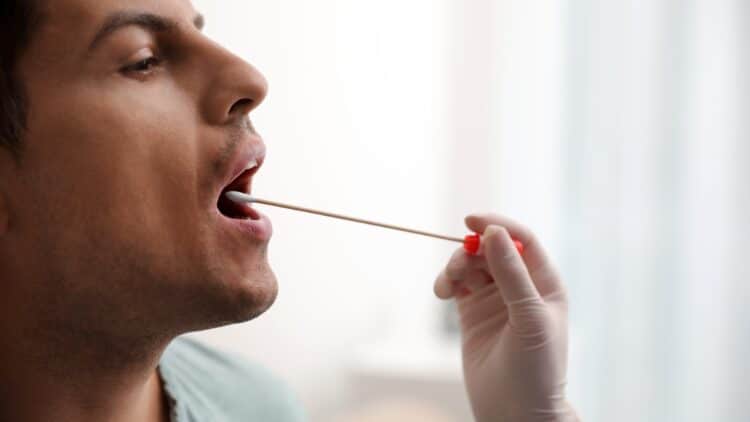Have you ever suffered from dry eyes and mouth? What if I told you it could be an autoimmune disease? What’s more, there’s a good chance you may need artificial tears because of a virus present in your saliva.
A study published in early September 2025 in the journal Nature Microbiology has found signs of a virus present in saliva called vientovirus. This could be the culprit for activating Sjögren’s syndrome, a disease that causes dry mouth and eyes. Scientists suspect that the immune system mistakes parts of this salivary virus for parts of the body itself, and as a result, it ends up attacking the wrong target. Although the studies have not been finalized, they believe the link is quite probable.
What is Sjögren’s syndrome?
This hard-to-pronounce syndrome is an autoimmune disease. As we’ve mentioned, it mistakenly attacks the glands that produce saliva and tears instead of the virus that’s in your saliva. The most obvious symptoms are dry eyes, dry mouth, and frequent cavities. In some cases, it also affects the joints, nerves, or even lungs.
This autoimmune disease primarily affects women (approximately nine out of ten patients with this disease are women) and is usually diagnosed after the age of 50. In the United States alone, there are an estimated 4 million patients with this autoimmune disease. Globally, epidemiological experts report 23 to 70 cases of this autoimmune disease per 100,000 people. Dr. Henrik Sjögren was the first to describe the set of symptoms in 1933, hence the name.
The disease had been documented by other European doctors, but they hadn’t quite put their finger on the link —and therefore, on the syndrome— to all those disconnected symptoms. It was the Swedish ophthalmologist Henrik Samuel Conrad Sjögren the first one to detail nineteen cases (all women) suffering from chronic arthritis and severe dry conjunctivitis. He was the first practitioner to connect all symptoms under a single clinical syndrome.
Study conducted in 2025
Nature Microbiology published a study in which they analyzed the saliva of 35 people with this autoimmune disease. They also studied the saliva of 25 healthy people. They focused on the virome, which is the collection of all the viruses in a specific location (in this case, saliva). This concept is very similar to the microbiota, but instead of bacteria, the virome is a compendium of viruses.
Researchers found a greater quantity of vientovirus in people suffering from the autoimmune disease. What’s more, the higher the amount of vientovirus, the worse their tear function and antibodies were. Although this isn’t enough proof that the virus directly causes the disease in humans, vaccination studies have begun on mice. When inoculated with vientovirus, the mice produced antibodies similar to those of the autoimmune disease.
The Vientovirus
The vientovirus belongs to a family of viruses called Redondoviridae. This family of viruses was discovered only recently, in 2019. Due to a concept called “molecular mimicry,” the immune system believes that both the virus and the human protein are enemies, and therefore, it ends up attacking the body itself. The study suggests that parts of the vientovirus resemble the human protein Ro52.
If scientists can prove the role of the vientovirus in the autoimmune disease, they could potentially design vaccines, antivirals, and, finally, therapies that improve the quality of life for patients with the disease.
Today, people who have to live with this autoimmune disease must resort to artificial tears, gels, and punctal plugs. To deal with the lack of saliva, they must maintain very diligent dental hygiene to avoid cavities. In more extreme cases, they have to resort to medications like hydroxychloroquine or methotrexate. The new treatment is still under development, but this finding is a pathway to new treatments for the autoimmune disease.

